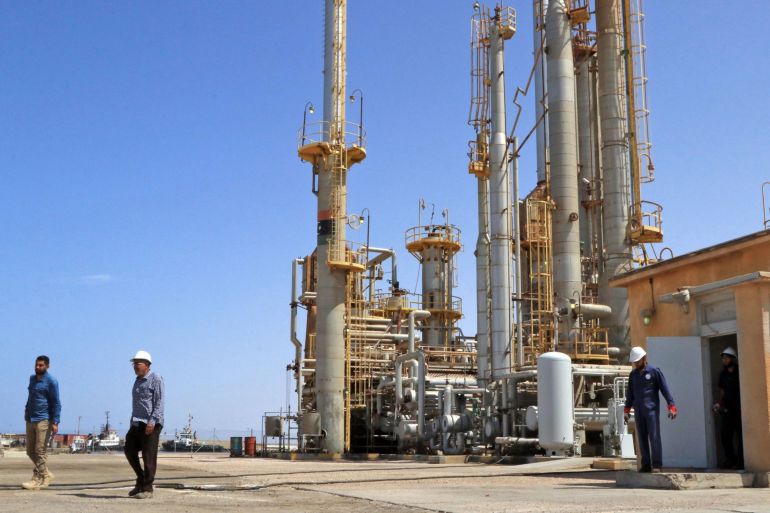False dawn or new day? Libya’s oil industry restarts in parts
After being effectively shut down by civil war since January, Libya’s oil industry is slowly gearing up again.

Libya’s oil industry, all but shut down since January because of civil war, is reopening — in parts.
Oil output has risen to at least 250,000 barrels a day from roughly 90,000 since the partial lifting last week of a blockade on the OPEC member’s energy facilities.
Keep reading
list of 4 itemsWhat’s slowing down America’s clean energy transition? It’s not the cost
Global coal use to reach record high in 2023, energy agency says
COP28 Dubai is over: Four key highlights from the UN climate summit
The state National Oil Corp. allowed exports to resume at the eastern ports of Hariga, Brega and Zueitina. Four other oil ports are still closed, including Es Sider and Ras Lanuf – the country’s largest and third-largest – and Zawiya, which ships crude from Libya’s biggest field, Sharara. The NOC’s evaluating security at export terminals that are still shut.
JPMorgan Chase & Co. and Goldman Sachs Group Inc. forecast that output will rebound to at least half a million barrels a day by the end of the year. The former sees it continuing to rise to 1 million barrels daily by March 2021, putting more pressure on oil prices already hammered by the coronavirus pandemic.
Libya has seen false dawns before, and previous truces in its civil war have quickly ended.
“This time around it feels different,” said JPMorgan analysts including Natasha Kaneva and Gregory Shearer. The political deal enabling some ports to reopen “offers an action plan to solve the problem at the crux of the conflict. It also garnered the broad backing of international powers involved in Libya, including Russia. Libyan volumes are large enough that they will both impact global balances but also accentuate regional imbalances, depending where the exports are directed.”

Here’s the latest:
- Fields that supply the reopened ports of Hariga, Brega and Zueitina are pumping an additional 150,000 barrels a day, according to two people with knowledge of the situation. Production will continue to rise as tankers arrive and load crude from storage, making room for fresh oil from the fields, they said
- Arabian Gulf Oil Co., which operates Hariga, said it restarted the Messla and Hamada fields but not its biggest deposit, Sarir
- Production from Sirte Oil Co., which runs Brega, rose to its normal level of 70,000 barrels a day; Brega has 490,000 barrels in storage and a capacity of 1.3 million
- A tanker is expected at Zueitina on Oct. 3 to load 1 million barrels; the port can store more than 4.5 million barrels
- Last week, two tankers each shipped one million barrels from Hariga
- At Es Sider, the Minerva Eleonora was to have loaded 630,000 barrels earlier this month before the order was canceled; the ship is still anchored at the port, which remains under force majeure
- The Sharara field is yet to restart, according to a person with knowledge of the situation. The western deposit, which can pump 300,000 barrels a day, is run by the NOC in a joint venture with France’s Total SE, Spain’s Repsol SA, Austria’s OMV AG and Norway’s Equinor ASA
- The nearby El Feel field, in which Eni SpA of Italy has a stake, is also shut down
- Below is a list showing the status and export capacity, in barrels a day, of Libya’s oil export terminals, according to data compiled by Bloomberg:

(Updates with analyst quote.)
–With assistance from Hatem Mohareb.